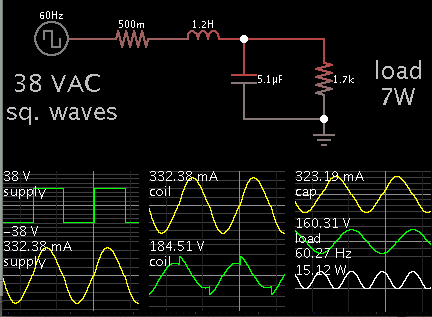Kryptone
Member level 3
Hello All,
I am building an inverter using the microcontroller it works but I am getting a modified sinewave eventhough I used an LC filter with load in series with inductor and a capacitor (44uF, 400V) in parallel to the min load which is a 7W,110V bulb and I require a pure sinewave how can I achieve this???
Please help
I am building an inverter using the microcontroller it works but I am getting a modified sinewave eventhough I used an LC filter with load in series with inductor and a capacitor (44uF, 400V) in parallel to the min load which is a 7W,110V bulb and I require a pure sinewave how can I achieve this???
Please help
